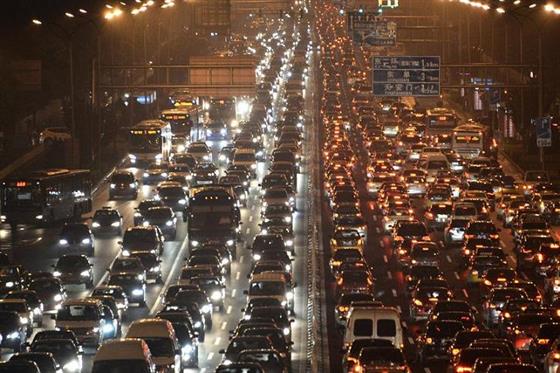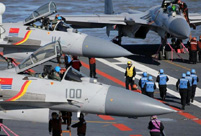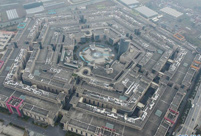

 |
| (File photo) |
BEIJING, Jan. 24 -- Beijing will cap its population at 23 million by 2020, officials said during the annual local "two sessions".
The two sessions refer to meetings of the Municipal People's Congress, the local legislature, and the Municipal Committee of the Chinese People's Political Consultative Conference, a local political advisory body.
In the next five years, Beijing will continue to relocate population from downtown areas to suburban areas, said mayor Wang Anshun. Permanent population in the downtown areas will drop by 15 percent from 2014.
The population ceilings have been made according to the maximum capacity of resources such as water, sources said.
Beijing has seen slower population growth in recent years thanks to the efforts in adjustment of city functions and relocation of relevant industries. In the last five years, annual growth rate was 2 percent, compared with 5 percent in previous years, statistics show.
In 2015, Beijing had 21.7 million permanent residents. Beijing aims to limit its population within 22 million in 2016.
In the past decades, Beijing has repeatedly failed its population control targets, as people from across the country flocked to the national capital, attracted by its advantages in economic, cultural, educational and medical resources, among others.
Increasing population adds pressure on local resources such as water and worsens traffic congestion and environment problems.
"It has been difficult to simply force out the people, without finding proper destinations for the relocated population," said vice mayor Li Shixiang, adding that a coordinated development plan of Beijing-Tianjin-Hebei has come as a desirable solution.
Lu Yan, director of the Beijing Municipal Development and Reform Commission, the economic planning body, said Beijing will continue with its relocation plan, and divert its population to new towns and outlying regions.
In 2016, about 300 companies, mainly manufacturing businesses, will be moved out of the city propery. In the next five years, large logistics bases and wholesale markets will be moved out from the areas within the fourth ring road.
Measures will also be taken to ease the demographic pressure on downtown regions.
The Xicheng district will reduce its population by 3 percent in 2016, while the Dongcheng district will limit its population by relocating hospitals and cutting the number of recruits in the technical schools.
Meanwhile, Beijing will continue to move its municipal administrative organs from downtown area to east suburban Tongzhou district next year, said mayor Wang Anshun.
By 2017, some of Beijing's administrative organs will be moved into Tongzhou, he said.
 A foreign girl explains what China should be proud of
A foreign girl explains what China should be proud of Chinese navy's air-cushioned landing craft in pictures
Chinese navy's air-cushioned landing craft in pictures Chinese pole dancing master opens class in Tianjin
Chinese pole dancing master opens class in Tianjin PLA holds joint air-ground military drill
PLA holds joint air-ground military drill Charming female soldiers on Xisha Islands
Charming female soldiers on Xisha Islands Beautiful skiers wear shorts in snow
Beautiful skiers wear shorts in snow Getting close to the crew on China's aircraft carrier
Getting close to the crew on China's aircraft carrier Chinese stewardess celebrate test flight at Nansha Islands
Chinese stewardess celebrate test flight at Nansha Islands Pentagonal Mart becomes the largest vacant building in Shanghai
Pentagonal Mart becomes the largest vacant building in Shanghai Top 20 hottest women in the world in 2014
Top 20 hottest women in the world in 2014 Top 10 hardest languages to learn
Top 10 hardest languages to learn 10 Chinese female stars with most beautiful faces
10 Chinese female stars with most beautiful faces China’s Top 10 Unique Bridges, Highways and Roads
China’s Top 10 Unique Bridges, Highways and Roads Virtual reality takes porn ‘to the next level’
Virtual reality takes porn ‘to the next level’ Online spat won’t hinder cross-Straits ties
Online spat won’t hinder cross-Straits ties A look behind the scenes at China’s censorship watchdog
A look behind the scenes at China’s censorship watchdog $93m gay app deal raises questions over future of LGBT services
$93m gay app deal raises questions over future of LGBT servicesDay|Week